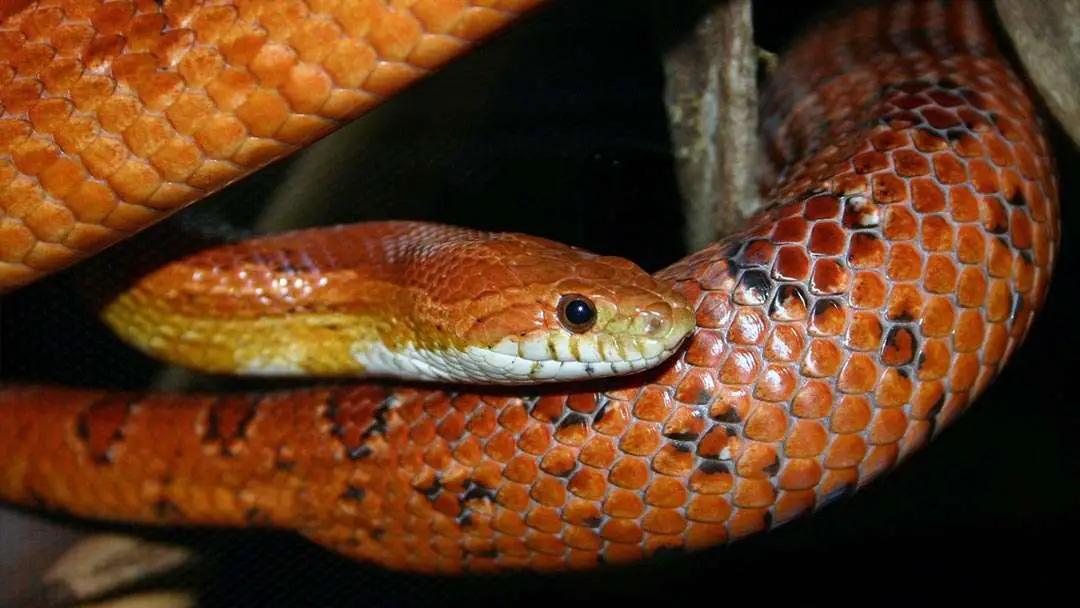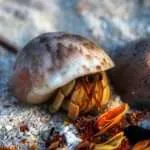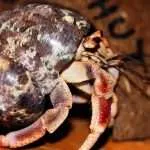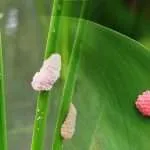Are you thinking about providing adequate Care for your Corn Snake? I have written this article to provide everything you need to know about having a Pet Corn Snake.
Let’s take a dive!
Also known as Rat Snake, the Corn Snake is a non-venomous snake and a native of the eastern part of the United States but found more abundantly in Florida.
The snake is called Corn Snake because it is found mostly in corn plantations (you might also find it at your backyard) and it also has a skin with a corn-like pattern.
It is also called a Rat Snake because it feeds mostly on rats or mice.
The Corn Snake makes a great pet – it is a beginner option pet – for people with interest in snakes or just loves snakes.
If you’re looking for which snake to adopt first and which are easier to own and manage, I recommend the Corn Snake.
So, how do you care for a Corn Snake after adopting one? Keep reading to learn more about the Corn Snake and how to care for it.
Description and Colour of a Corn Snake
The Corn Snake is a shy, slender, active (it rarely sits still) and harmless snake that comes in different colors and patterns. Corn Snake’s color includes but not limited to brown, orange, red, yellow, grey and even albino.
Most Corn Snakes takes two colors with one dominant one and will always have brown or black pigmentation. The albino species can take any color – pink, yellow, white, red, orange – but will have no dark brown or black pigmentation.
So, Mr. A’s Corn Snake can be bright yellow with a bit of black while Mr. B’s Corn Snake can be red or orange with a bit of brown.
The Corn Snake’s belly is covered in black and white.
Some factors such as genetics, age, geography, and size, determine the color, pattern, and scale that a Corn Snake will take.
Bear in mind that your Corn Snake will develop health issues based on these factors.
Lifespan and Size of the Corn Snake
The Corn Snake’s size – an adult – is usually between 2.5 to 5 feet in length. As for their lifespan, they live longer, between 15 to 20 years when in captivity – like a pet – but they live a maximum of 10 years when in the wild.
Honestly, as a pet, the lifespan of your Corn Snake largely depends on the care and commitment you give it.
Sleeping Habit of the Corn Snake
The Corn Snake is an active animal that spends its day playing and hiding while at night it spends its time sleeping. It’s diurnal and not nocturnal.
Some Snakes are the opposite – they sleep all day and come out at night to hunt, I don’t think they care about playing.
Feeding Habit of the Corn Snake
The Corn Snake eats corn, simple.
Okay, I’m kidding. The Corn Snake is constrictors by nature, meaning they get a firm grip on their prey, coils itself around it and squeeze the prey until it gives up. Then, it takes the prey and swallows whole, usually from the head first.
The Corn Snakes’ prey includes rats, mice, bats, and birds. They sometimes eat lizards and tree frogs – a meal for the young snake but adults love feeding on rats.
Occasionally, you can feed your Corn Snake with quail eggs, although, eggs are not part of a snake’s regular diet.
Habitat of the Corn Snake

When you’ve decided on taking in a Corn Snake, there’s a need for you to build an enclosure for the snake.
The enclosure is where the snake will spend most of its time. This is necessary for providing care for your corn snake.
As such, there’s a need for the enclosure to have everything necessary that will improve the growth of the snake and to be kept clean at all times to avoid illness or disease.
An enclosure means, you get a tank and design it – like you would your apartment – for the snake.
A 30 to 40-gallon tank can serve as a tank for your snake but if you can’t get that, you can measure the length of the snake and get a tank a bit bigger than the length of the snake.
The tank should be designed like the natural habitat of the Corn Snake. This means you’ll need to put beddings – flooring for the tank, plants or branches (for climbing purpose), box, heating system, and water.
Other things go into the tank of the snake but the above are the major features.
Bedding
Beddings are a kind of substrate that you use for the bottom of the cage – think of it as the rug in your living room.
There are different kinds of bedding to use for your Corn Snake tank such as coconut fiber, newspaper, aspen shavings amongst others. Whatever bedding you decide to use, make sure it’s able to retain moisture and humidity.
Sand, pine bedding is not recommended for your snake. The sand can get into their nostrils while the oils of the pine bedding can be toxic for the snake.
Plants or trees are needed in the cage because your snake may occasionally need to climb. Leaving them on the plain surface can bore the life out of them.
Heat
For your Corn Snake to get the needed heat and humidity, you’ll need to install a heating system.
When left in the wild, snakes – reptiles in general – have the right amount of light, humidity, and heat.
It is not advisable to place the tank directly where you have sunlight, this will be too much for the snake. The tank should be placed in a cool place but with a heating system installed.
A heating system above the tank or beneath the tank will be just fine. Do not place the light too close to the tank, it will attract the snake and may burn its skin if exposed too much.
The temperature of the tank should be between 75 to 85 degrees Fahrenheit.
Box – a plant pot or a cardboard box will be just fine for this. The reason for a box inside the cage is for your snake to play hide and seek, alone. The box just serves as a hiding spot for the snake.
Water
Water is life. Your Corn Snake needs clean and fresh water to stay healthy.
Visiting a pet store can help you out with building an enclosure for your Corn Snake.
One last thing on the enclosure, it must be a secured place for the snake and it must be kept clean at all times. A dirty enclosure will invite parasite which will make your snake ill.
Health Issues of the Corn Snake
Of course, your Corn Snake also gets ill and develop disease just like any other creature. The Corn Snake is susceptible to parasites which lead to illness which can also be deadly if not taken care of.
You need to take your Corn Snake to the veterinarian for testing to find out what illness your pet is suffering from.
Most importantly, once you purchase the Corn Snake, you need to carry out a thorough check-up to find out its health status or if there’s special care for the species you have.
You need to take samples of vomit or feces when visiting the vet to ascertain what your snake is suffering from.
Corn Snake Shedding
You must know by now that snakes shed their skin, I mean their entire skin, as they grow old. And your Corn Snake is no different from other snakes.
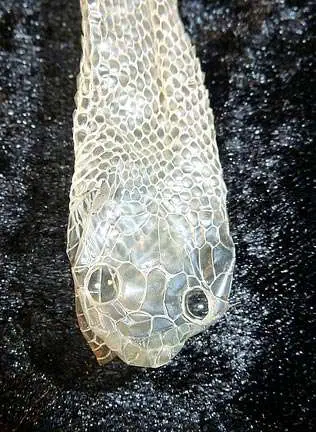
In the case of the Corn Snake, a few days before shedding the skin, its eyes will become milky blue, its skin will become dull and then it will take on a whitish sheen.
Your Corn Snake is ready to shed its skin when its eyes become clear.
What can you do during the shedding process? You can help by giving your Corn Snake a shallow dish of tepid water to immerse itself in as it goes through the process.
Reproduction of the Corn Snake
No, they don’t give birth to their young alive, they lay eggs – oviparous.
Corn Snakes starts mating at the age of 18 to 36 months.
The mating season is usually between March and May and they birth their young between late May and July.
The female lays a minimum of 10 eggs and a maximum of 30 eggs. After 60 to 65 days of incubation, the hatchlings begin to emerge.
Unfortunately, the Corn Snake has parents with zero parental care. This leaves the hatchlings to fend for once they hatch. Not fair!
Tips for keeping a Corn Snake as a Pet
The first thing is this, if you don’t like snakes, there’s no need to consider adopting one as a pet. You can only read this article to gain knowledge.
But if you like snakes – and would love one as a pet – the Corn Snake is one of the best to adopt. It’s a beginner pet for snake lovers.
Also, before taking a Corn Snake, you need to be sure that no one around you, especially those in your home, suffers from ophidiophobia – the fear of snakes – or at best you reside alone. Only then can you adopt a Corn Snake or any snake for that matter.
Word of Caution!
Another thing to consider before adopting a Corn Snake is to be sure you don’t have little kids at home or you have them under control. Toddlers might not know how to treat such small creature and they are likely not going to keep to the rules you give concerning the latest addition to the family.
Do not house two snakes together, one snake per tank.
It’s difficult to find the Corn Snake if you lose it. As such, make sure the tank is secured and you don’t drop it anywhere else but the tank. Your Corn Snake might be killed – out of fear or mistaken for a venomous snake – if left to wander about.
In my opinion, the Corn Snake is one of the best snakes to have as a pet and one of the easiest to care for. You only need to pay attention to your snake so that you’re able to notice when something doesn’t look right with your snake.

